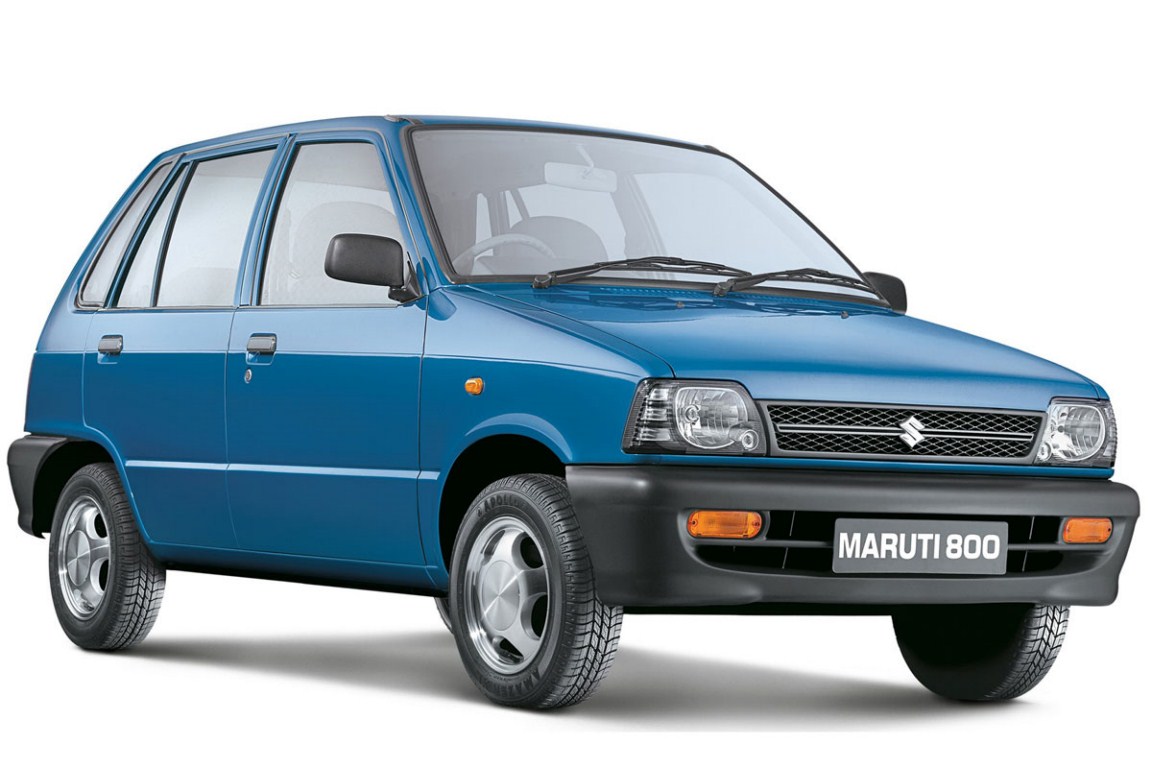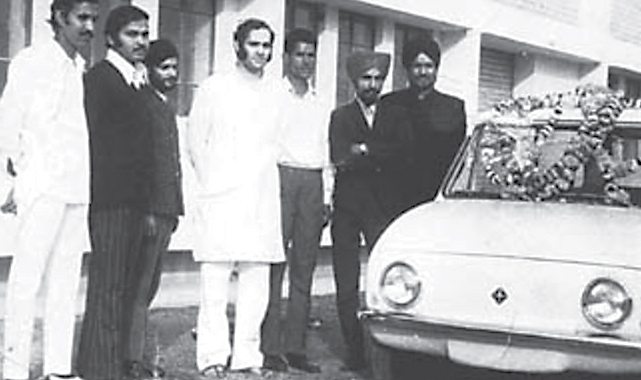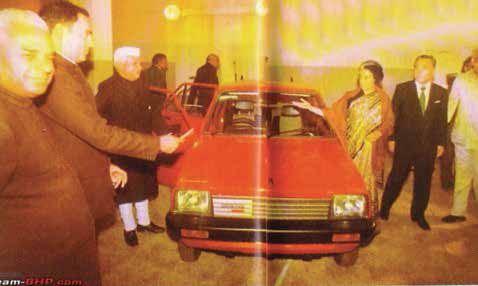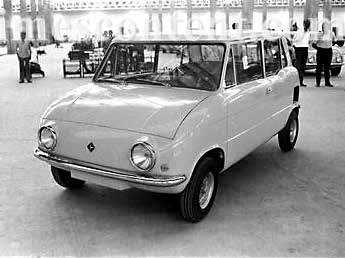Issue No.14 / September 16-30,2015

Time was, when owning a Maruti was the ultimate sign that you had arrived. The groom that owned a Maruti, the perfect dulha for your laadli, and the vendor who zipped around town in the M-800, the most viable business partner. It was fast, easy to drive and maintain—and substantially more economical than the competition on hand—the Ambassador and the Fiat.
In fact, its chairman RC Bhargava has summed up its charisma in several interviews thus: “This was India's first new modern car. It was streets ahead of its competitors on technology and everybody was queuing up to book it—from industrialists to senior executives.”
That may not be true today—given the sheer range of choice available to the discerning and globally-savvy, well-travelled Indian today, but it continues to command a formidable presence. With close to 40 per cent of the Indian passenger car segment in its kitty and an income pegged at Rs. 50, 802.22 crores (as per March 2015) Maruti continues to zoom ahead, despite cranky labour issues that refuse to go away and relentless competition from faster, swisher and swankier cars.
Get this: Even as it sold its 10 millionth car sometime back, the Maruti does not have to be anything other than a Maruti.
And critics can go take a ride literally to find out just why. It’s a true blue desi success story and continues to resonate with the middle class as reliable, efficient and accessible
Even in the face of other players in the market, ask any driver worth his salt-- what car best suits India’s roads and the answer is predictable: Maruti—what else? No small thanks to a wonderful service cum sales network that stitches up the country, as well as a long-standing reputation for being costeffective. The fact that it helps its customers with insurance and finance doesn’t hurt either. As things stand today, Maruti Suzuki India Limited (MSIL) is the largest automobile manufacturer in South Asia. It is also the third largest passenger car exporter in India after Hyundai and Nissan, exporting mainly to Africa and Europe. All this, long after it eased out its contemporaries: The Ambassador and the Premier Padmini.
As things stand today, Maruti Suzuki India Limited (MSIL) is the largest automobile manufacturer in South Asia. It is also the third largest passenger car exporter in India after Hyundai and Nissan, exporting mainly to Africa and Europe

In June 1971, a company called 'Maruti Limited' was incorporated under the Companies Act with Indira Gandhi’s younger son—the hugely powerful Sanjay Gandhi -- as its first ever MD. Despite the initial curiosity, the company went into liquidation in 1977. Sanjay’s untimely death in a plane crash in 1980 did not help either. Was the dream never to be?
A year later, though, Maruti got a new lease of life, when at the behest of Indira Gandhi, the Indian government threw its weight behind it, under the banner of Maruti Udyog Limited and started looking for an active partner for a whole new company.
In 1982, they found the perfect partner in Suzuki of Japan. From 2007 onwards the company became Maruti Suzuki India Limited.
At first, Maruti Suzuki was mainly an importer of cars which brought in as many as 40,000 fully built-up Suzukis in the first two years, and even after that the early goal was to use only 33 per cent indigenous parts. This upset the local manufacturers considerably. There were also some concerns that the Indian market was too small to absorb the comparatively large production planned by Maruti Suzuki, with the government even considering adjusting the petrol tax and lowering excise duty in order to give a shot in the arm to sales.
But then came the first-ever Maruti 800. And history was made. The 796 cc hatchback was based on the SS80 Suzuki Alto and was India’s first affordable car. Close on its heels came the Maruti Van with the same threecylinder engine as the 800. The plant based in Gurgaon hiked up its capacity to 40,000 units. The Gypsy was soon to follow, and in 1987 the car became the first ever Indian automobile player to export vehicles to Hungary. The installed capacity of the plant in Gurgaon reached 100,000 units.

In 1992 Suzuki upped its stake in Maruti to 50 percent, making the company a 50-50 JV with the Government of India as the other stake holder. A host of new models entered in the 1990s—each more innovative than the next. First came the Zen, a modern 993 cc, hatchback, followed by the 1298 cc Esteem , a finer version of the Maruti 1000.
In 1994 Maruti Suzuki produced its 1 millionth vehicle since the commencement of production, being the first company in India to do so. This was still not enough to meet the demand and the plant further upped its capacity to 200,000 units. Maruti also launched a 24-hour emergency on-road vehicle service, the first of its kind in the country. In 2000, it was the first automobile company to adopt a call centre mode to deal with growing customer interaction. Maruti Suzuki has two manufacturing facilities in India.
Both manufacturing facilities have a total capacity of 14,50,000 vehicles annually. During a recent meeting of the Gujarat chief minister with Suzuki Motor Corp. chairman & CEO Osamu Suzuki, the chairman had said that the work on the car manufacturing plant at Mandal near Ahmedabad would be started soon.
In 1982, they found the perfect partner in Suzuki of Japan. From 2007 onwards the company became Maruti Suzuki India Limited

The Maruti Driving School, a well-equipped training centre with state of the art teaching facilities that include lectures on safe driving practices as per the Indian law, simulator driving and finally road practicals with trained instructors was first opened in New Delhi as part of its social commitment. Today, the school enjoys a presence in different cities across the country.
Right up to 2007, two Japanese joint MDs and a Japanese chairman flanked the Indian MD, Jagdish Khattar, to keep a tight control over Maruti.
Then Suzuki finally changed things to broaden the management structure.
It abolished the post of joint MDs and appointed an Indian chairman. A new mini board was formed of nine top executives — with an Indian-Japanese pair steering each of the four key departments (the fifth, administration, is managed only by an Indian).
This hybrid strategy worked alright. In 2008-09, when the industry grew at the slowest pace in seven years, market leader Maruti’s sales grew by an above-average 3.6 per cent and exports grew by a third. Senior officials stress that the new set up gave them the flexibility and the nimbleness to rise to the occasion.
Thanks to regular meetings, Indians and Japanese employees are in touch with each other and decision making is faster.

Without a doubt, though, 2012 was quite the worse year of its existence when violence broke out at its Manesar plant, injuring 90 people and killing one, in the worst ever stand-off between managers and workers. Agitating workers burnt down the administration wing of the plant that manufactures cars like Swift and Dzire.
The workers demands were an increase in salary, conveyance, laundry allowance and home loans to buy their own houses. They also alleged harsh working conditions—which were denied by the higher ups. Face-offs led to the suspension of a worker leading the agitation and things got worse.
The company's General Manager of Human Resources had both arms and legs broken by his attackers, unable to leave the building that was set ablaze, and was charred to death.
As per reports, the damage to the company was pegged to be a whopping Rs.2500 crores. The company fired 500 employees and restarted operations subsequently, but the episode calls for a major systemic overhauling.
Sure, India has strict labour laws, but they are widely overlooked even as low wage contract workers are hired, causing great anger to other workers.
However, despite the rumbles of discontent, the car’s competitive pricing, dealership and finance network (with several public sector banks happily giving you a loan for a Maruti), work in its favour. And so, the ride continues.
By Mahalakshmi Hariharan